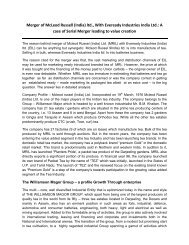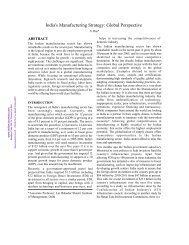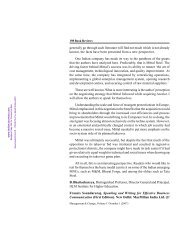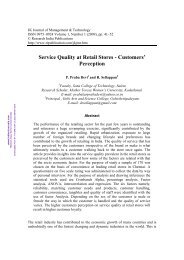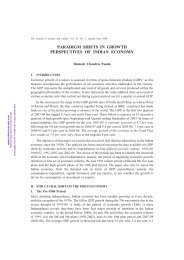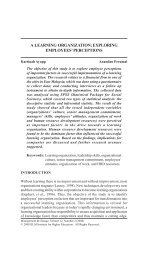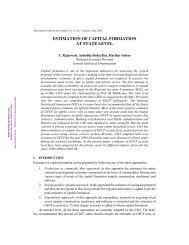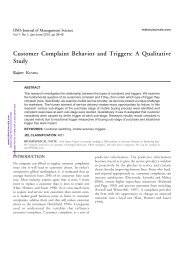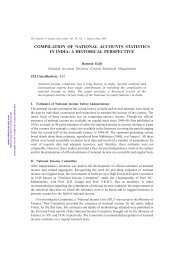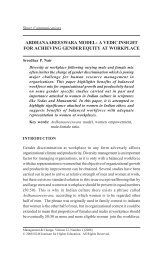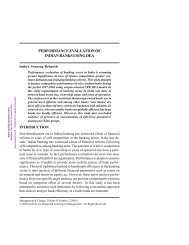Cultural Globalisation - Mimts.org
Cultural Globalisation - Mimts.org
Cultural Globalisation - Mimts.org
You also want an ePaper? Increase the reach of your titles
YUMPU automatically turns print PDFs into web optimized ePapers that Google loves.
K SYAMALAMMA AND P KRISHNA MOHAN REDDY<br />
cooking, electricity, fuel, the production of food grains and transport to household<br />
and kitchen articles, that is, almost all articles used by people around the world<br />
were introduced by Europe. In essence, this may be called “Europeanization”, though<br />
it is truly globalisation. Today, in almost every city, town or even village in Africa,<br />
Asia or South America, in most homes, offices or even agricultural fields, little is<br />
left in terms of lifestyles, which is not European or Western. Most f<strong>org</strong>et that<br />
though the US today is steering globalisation and the process of globalising, it<br />
obtained most of its lifestyle goods from Europe. In this sense, Europe has already<br />
globalised the entire world, including the US.<br />
www.IndianJournals.com<br />
Members Copy, Not for Commercial Sale<br />
Downloaded From IP - 115.248.73.67 on dated 27-Dec-2010<br />
<strong>Cultural</strong> <strong>Globalisation</strong> and Asia<br />
<strong>Globalisation</strong> is generally understood in terms of the movement of goods and<br />
services that is, in terms of trade. In the last two decades as various agreements have<br />
been signed in world trading <strong>org</strong>anisations, a genuine globalisation has taken place.<br />
However, this process of globalisation started and has been sustained in a few “nuclear<br />
centres” of the world. Former Indian External Affairs Minister Pranab Mukherjee<br />
(The Hindu, March 18, 2007) described this feature as the “centre of gravity” in<br />
After the advent of colonisation,<br />
Africa and Asia were made to<br />
serve the interests of European<br />
colonial powers, either as<br />
suppliers of raw materials and<br />
finished goods or as markets for<br />
European products. The<br />
Industrial Revolution globalised<br />
world production and trade.<br />
the global economy. He said that the<br />
global economy was undergoing a shift<br />
in its centre of gravity from Europe and<br />
North America to Asia for the first time<br />
in 350 years. Historically speaking this<br />
feature has been present since the times<br />
of the Egyptian and Indus civilisations.<br />
Around 500 BC for instance, the centres<br />
of gravity were parts of Africa and<br />
Europe and the whole of Asia. The<br />
former two were dependent on the latter<br />
for certain goods like spices, silk, etc and in turn served as its markets. This trend<br />
continued until the fourteenth and fifteenth centuries. After the advent of<br />
colonisation, Africa and Asia were made to serve the interests of European colonial<br />
powers, either as suppliers of raw materials and finished goods or as markets for<br />
22<br />
WORLD AFFAIRS WINTER 2009 VOL 13 NO 4



